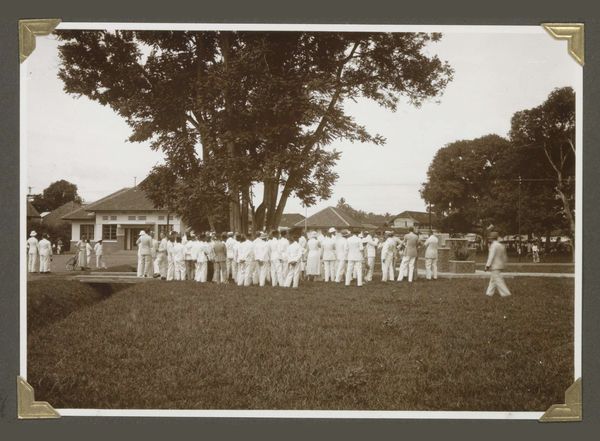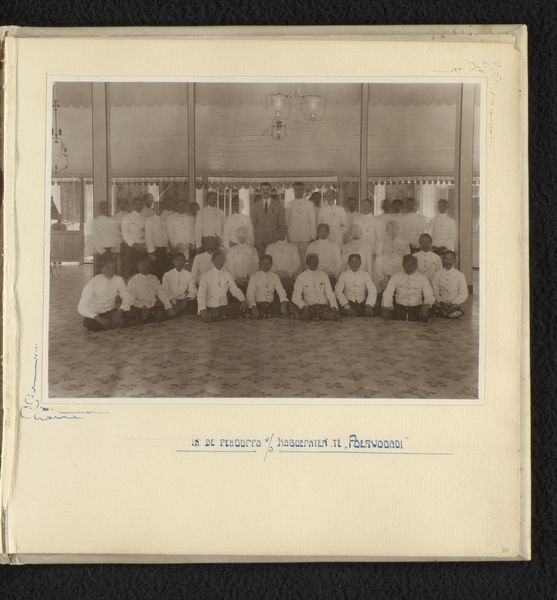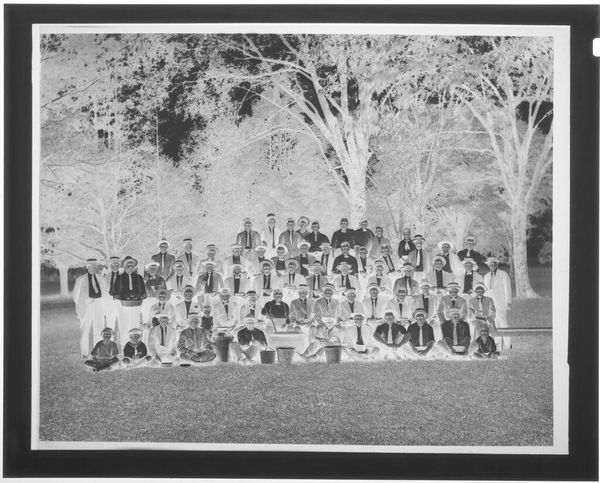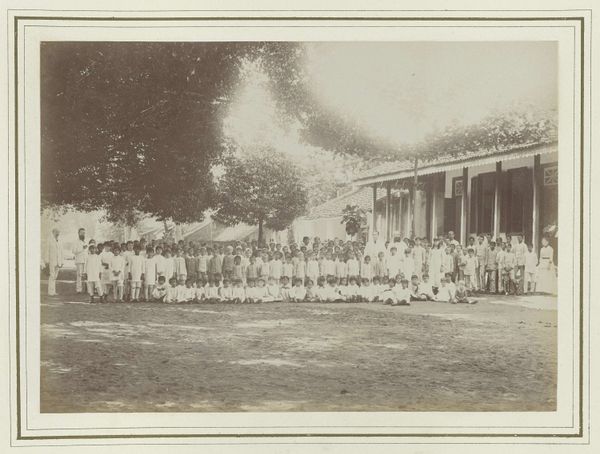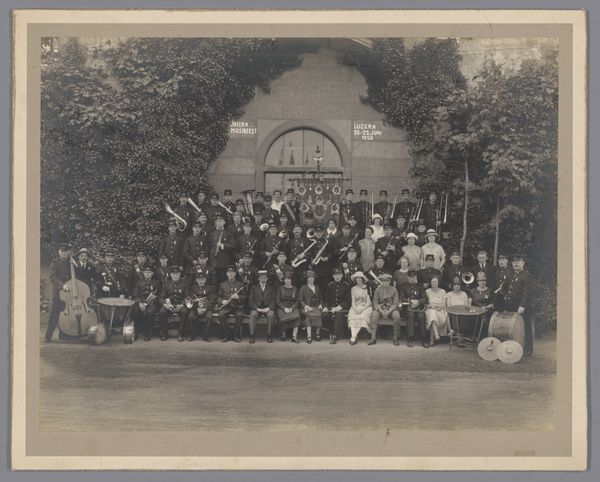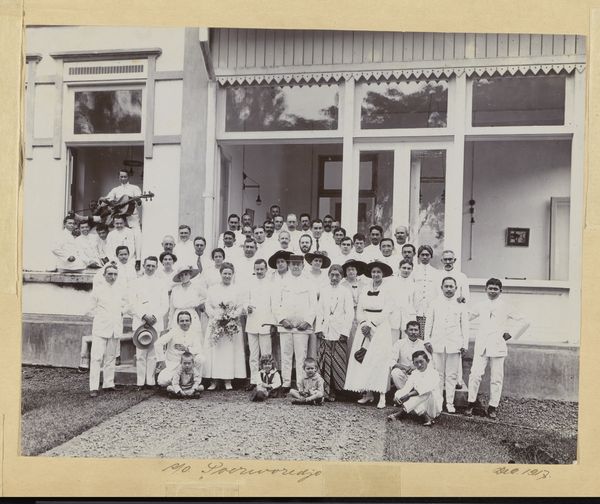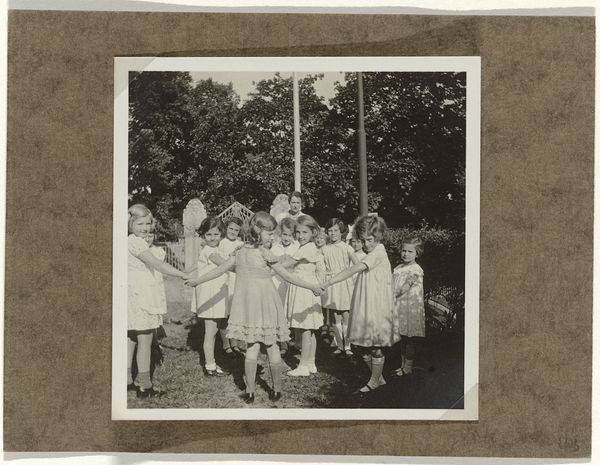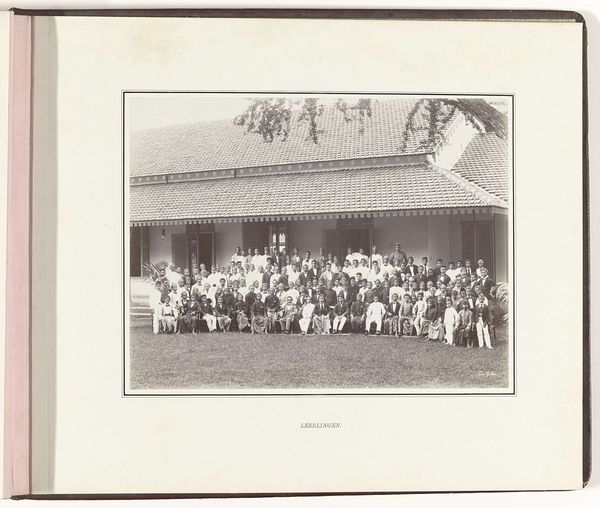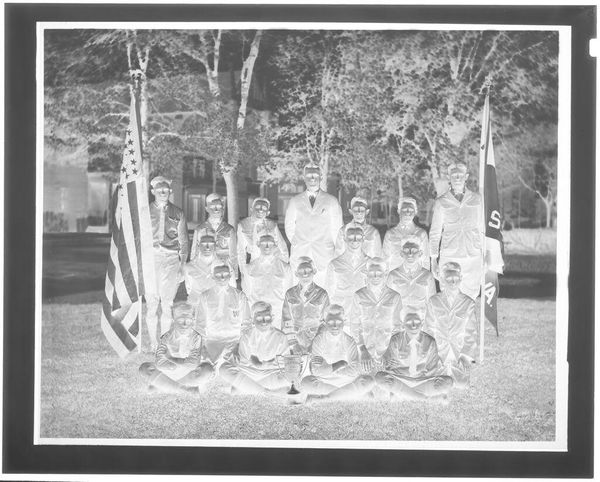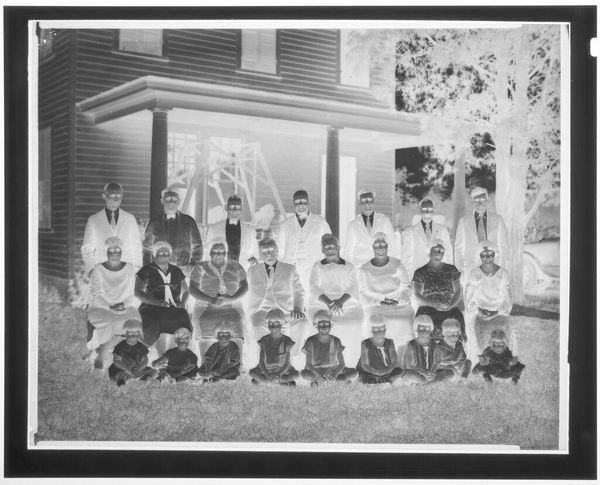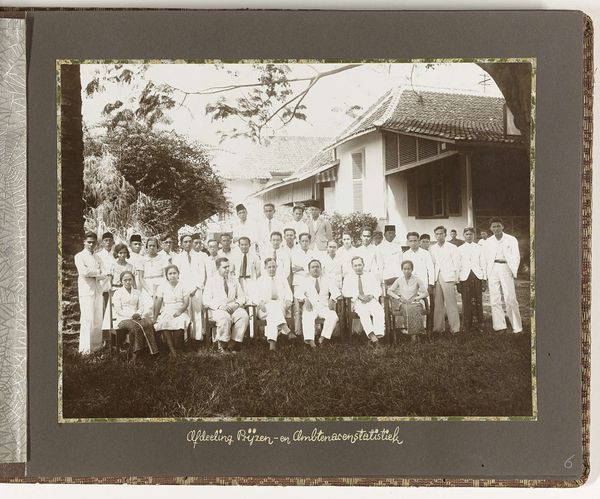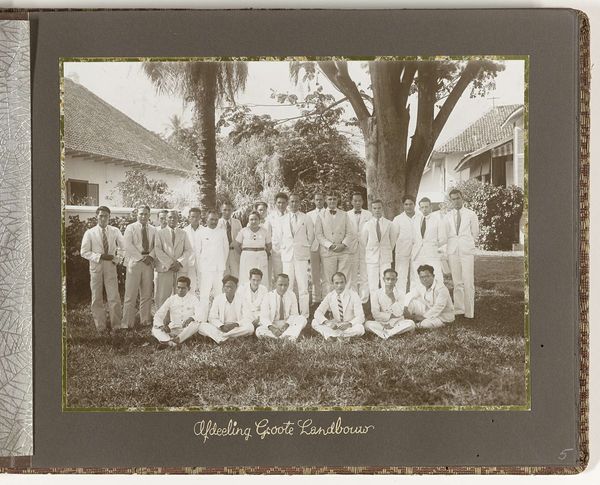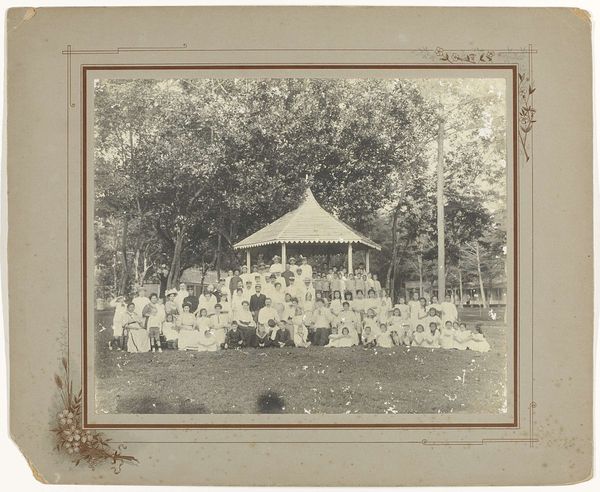
Afdeling Handelsstatistiek van het Centraal Kantoor voor de Statistiek te Batavia Possibly 1935
0:00
0:00
photography
#
portrait
#
still-life-photography
#
muted colour palette
#
photography
#
natural colour palette
#
group-portraits
#
orientalism
#
naturalism
Dimensions: length 167 mm, width 223 mm
Copyright: Rijks Museum: Open Domain
Curator: This is a photograph titled "Afdeling Handelsstatistiek van het Centraal Kantoor voor de Statistiek te Batavia," likely taken around 1935. Editor: What immediately strikes me is the sheer number of people and the uniformity of their attire. A sea of white, which suggests a powerful sense of unity and perhaps enforced conformity within this "Department of Trade Statistics" in Batavia. Curator: Absolutely, and the location – Batavia, now Jakarta, under Dutch colonial rule – is critical. Group portraits like this were common for colonial institutions, serving to visually represent the organization's power and reach. The photograph itself becomes a tool of colonial administration. Editor: The abundance of white reminds me, perhaps paradoxically, of cleansing rituals. It suggests newness and a desire to create order out of what was likely perceived as chaos. There's an element of imposing European ideals onto the landscape and its people. Do you feel like it imposes order and control on what was happening during the colonial rule? Curator: I believe the picture can be viewed as an important element of visual culture reflecting orientalist views. The staged setting, likely on the grounds of their office, contrasts the structured rows of employees with the backdrop of seemingly untamed tropical foliage, which plays into colonial narratives of bringing civilization to the "untamed" East. Editor: The interplay of light and shadow across the faces is fascinating. Some are clearly illuminated, others fall into shadow, which possibly implies how their respective contributions were or were not viewed and regarded. The building's façade looks very stoic. The fact that the individuals do not display natural colors might indicate a cultural uniformity during colonial rule. Curator: Right. I mean that very structure, with its blend of European architectural styles, represents a physical manifestation of colonial authority and is presented that way for certain propaganda purposes. It’s meant to project permanence. A stability, where people come together to represent power and progress. This ties back to the office's purpose in shaping and controlling trade, crucial for the colonial economy. Editor: It makes me think of colonial powers meticulously collecting and organizing data. A perceived imposition of logic and order upon an often less understood reality. The symbols aren't very direct, but I feel how they affect. I see a certain arrogance behind the desire to meticulously catalog everything and everyone. Curator: Precisely. It becomes a document reflecting not just an organization, but the complex power dynamics inherent in colonialism. Thank you for sharing that insight! Editor: And thank you for setting the context around this rare image.
Comments
No comments
Be the first to comment and join the conversation on the ultimate creative platform.
